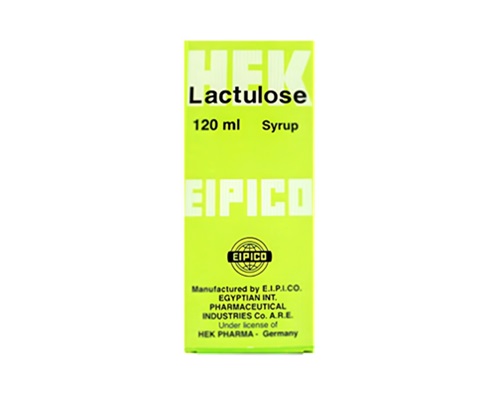Description
Trade name:
Duphalac
Compound:
Each 1 ml of syrup contains:
Lactulose 667 mg
Auxiliary components:
citric acid, purified water up to 100 ml.
Properties:
Laxative. Lactulose is a disaccharide consisting of galactose and fructose, is not hydrolyzed by disaccharidases of the small intestinal mucosa. It has a hyperosmotic laxative effect, stimulates intestinal peristalsis, improves the absorption of phosphates and calcium salts, and promotes the excretion of ammonium ions.
Lactulose is broken down by the intestinal flora of the colon into low-molecular organic acids, which leads to a decrease in pH and an increase in osmotic pressure and, as a consequence, an increase in the volume of intestinal contents. These effects stimulate intestinal peristalsis and affect the consistency of stool. The physiological rhythm of emptying the colon is restored.
In hepatic encephalopathy, the effect is attributed to suppression of proteolytic bacteria by increasing the number of acidophilic bacteria (e.g., lactobacilli), conversion of ammonia to the ionic form by acidification of the colonic contents, bowel movement due to a decrease in colonic pH and an osmotic effect, and reduction of nitrogen-containing toxic substances by stimulation of bacteria that utilize ammonia for bacterial protein synthesis.
Lactulose as a prebiotic substance enhances the growth of beneficial bacteria such as bifidobacteria and lactobacilli, while it becomes possible to suppress the growth of potentially pathogenic bacteria such as Clostridium spp. and Escherichia coli, which ensures a more favorable balance of intestinal flora.
Indications:
Chronic constipation, as well as diseases requiring relief of defecation. Prevention and treatment of hepatic encephalopathy in adults.
Method of administration and dosage:
Adults:
The usual initial (first three days) daily dose is 45 ml (3 tablespoons) of syrup taken once before breakfast or 15 ml (1 tablespoon) three times a day before meals. After achieving the therapeutic effect, a maintenance dose of 15 ml (1 tablespoon) of syrup should be taken on an empty stomach.
Children over 3 years old:
Initially 5 to 15 ml of syrup per day, the dose can be gradually increased every 3 days until the desired effect is achieved.
Children under 3 years:
Initially 5 ml of syrup per day, the dose can be gradually increased every 3 days until normal bowel movements are achieved.
Infants:
Initially 2.5 ml of syrup per day, the dose can be gradually increased every 3 days until normal bowel movements are achieved.
If bloating occurs, reduce the dose to one that is tolerable for the child.
Hepatic encephalopathy:
Adults: 20 ml to 80 ml of syrup per day in 3-4 divided doses.
Large doses of the drug used to treat liver encephalopathy may cause diarrhea. The dose should be adjusted so that the amount of loose stool does not exceed 2-3 per day.
Before use, you can mix the drug with water, fruit juices or milk.
Contraindications:
Hypersensitivity to lactulose; intestinal obstruction; fructose intolerance, galactose intolerance; lactase deficiency; glucose-galactose malabsorption; galactosemia; rectal bleeding (not caused by hemorrhoids); suspected appendicitis, acute inflammatory diseases of the abdominal cavity.
Use with caution: diabetes mellitus, colostomy or ileostomy.
Precautions:
Should not be used for abdominal pain, nausea, vomiting without verification of the diagnosis.
Should not be used in cases of inflammatory diseases of the gastrointestinal tract in the acute stage, as well as in cases of water-electrolyte metabolism disorders.
Use with caution in patients with gastrocardial syndrome. In such cases, treatment should be started with low doses and increased gradually to avoid the development of flatulence.
Use with caution in patients with diabetes mellitus, especially in cases of inflammatory lesions of the colon.
During long-term treatment (more than 6 months), the levels of potassium, chlorine and carbon dioxide in the blood plasma should be regularly monitored.
During therapy with laxatives, it is recommended to drink a sufficient amount of liquid (1.5-2 l/day, which corresponds to 6-8 glasses of 250 ml).
Side effects:
From the side of metabolism: very rare – hypernatremia; frequency unknown – disturbances of water-electrolyte metabolism that occur as a result of diarrhea.
From the digestive system: nausea, vomiting, abdominal pain, flatulence, diarrhea.
Storage method:
At a temperature not exceeding 30 degrees. In a dry place.
Package:
Plastic bottle of 200 ml.







